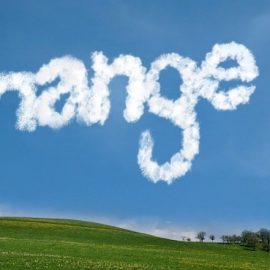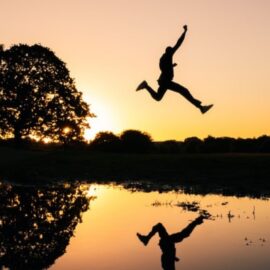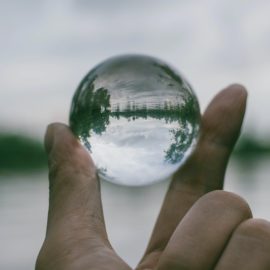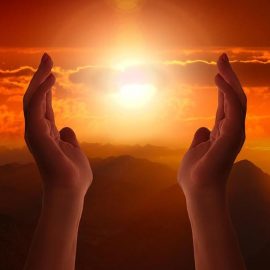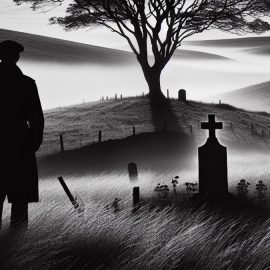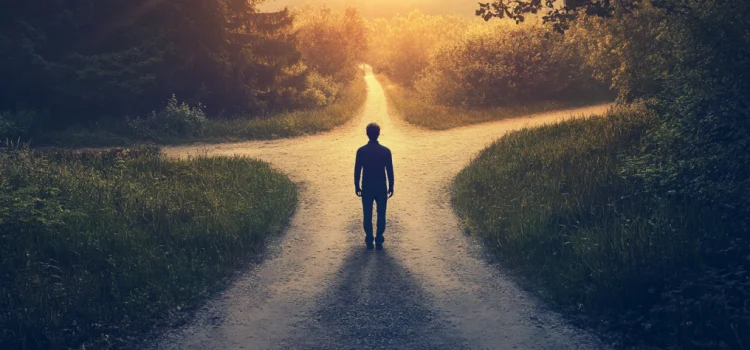
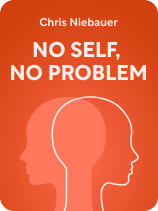
This article is an excerpt from the Shortform book guide to "No Self, No Problem" by Chris Niebauer. Shortform has the world's best summaries and analyses of books you should be reading.
Like this article? Sign up for a free trial here.
What’s the true nature of your self? What if science could confirm ancient Buddhist wisdom about the illusion of identity?
In his book No Self, No Problem, Chris Niebauer explores how neuroscience aligns with Buddhist teachings on the non-existence of the self. He presents three potential paths for navigating this revelation, focusing on the middle way of Buddhism as a balanced approach to life.
Read on to discover how embracing this middle way could transform your perspective and bring more peace to your daily experiences.
The Middle Way of Buddhism
Based on his neuroscience research, Niebauer suggests we take the middle way of Buddhism. Let’s take a step back to see how he comes to this conclusion and then dive into what the middle way is and why he recommends it.
In Niebauer’s assessment, neuroscience is finally catching up to what Buddhist teachers discovered thousands of years ago about the nature of the self: that it isn’t real. He shares what new research suggests about how the brain constructs your sense of self, using the unique capabilities of its left hemisphere and right hemisphere to convince you that you have a real and permanent self. He contends that these scientific studies reveal that your self-concept doesn’t correspond to something real or permanent—just like Eastern thinkers have taught for thousands of years.
Niebauer explains that, once you know intellectually that the self is an illusion, you can choose among three paths. The first path leads you right back to the status quo, where you identify yourself with the voice in your head and let your left brain tell you what story to believe about yourself and your world. At the other extreme, the second path leads you to a life filled with meditation training, mindfulness practice, yoga instruction, and prayer, where you dedicate your time to using these tools to try to transcend your narrative-based way of seeing the world.
The third path is what Buddhists call the middle way because it offers a compromise between the other two. Niebauer says that, when you take this path, you still live your life letting your left brain construct its narratives and make its judgments. But you also cultivate the ability to take those stories less seriously. Likewise, while you might practice meditation, mindfulness, or yoga to exercise the muscle of seeing things with your right brain rather than your left, you also spend time just living your everyday life.
(Shortform note: Buddhists describe the middle way as a compromise between deprivation and indulgence, since neither of those paths leads to enlightenment. The middle way is full of possibility. Psychologist and Buddhist monk Jack Kornfield says it offers a middle ground between many of the opposites important to Buddhist thought: being and non-being, form and emptiness, free will and determinism, and attachment and aversion. He advises that, to find this path, you have to practice mindfulness—and learn to trust life. The goal is to relate to the world not by removing ourselves from it altogether or losing ourselves in it completely, but by living in the reality of the present moment and being open to everything we experience.)
Choosing the middle way, as Niebauer describes it, is like allowing yourself to get caught up in a captivating novel, even though you know it’s just a story. From time to time, you’ll lose yourself in the action and feel the joys and disappointments of your life deeply. Other times, you’ll remember they’re all part of the story your left brain tells. You’ll be able to step back and watch as if from a distance, experiencing everything that comes your way without clinging too strongly to your left brain’s judgments of events and experiencing a much calmer and more open approach to life.
(Shortform note: Many people learn to find value in stepping back from their emotions. In The Faraway Nearby, Rebecca Solnit writes that when you distance yourself from your emotions, as Buddhism can teach you to do, you see patterns and connections among them. She says this isn’t indifference: It’s an ability to “see the thing as a whole, see all the islands and the routes between them.” Solnit contends that when you make connections among things you think, feel, and experience, you can find unexpected links between seeming opposites like uncertainty and hope. She believes that to hope is to embrace the unknowability of the world, as Niebauer advises: to expect we’ll be surprised by what we find when we open ourselves to life.)

———End of Preview———
Like what you just read? Read the rest of the world's best book summary and analysis of Chris Niebauer's "No Self, No Problem" at Shortform.
Here's what you'll find in our full No Self, No Problem summary:
- Why everything you know about yourself is wrong
- How science is catching on to what Eastern religions have been teaching for millenia
- How to loosen your grip on the thoughts and judgments that make you dissatisfied with your reality

